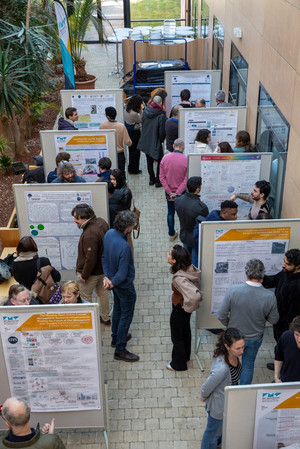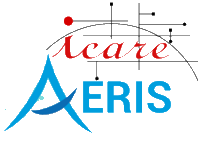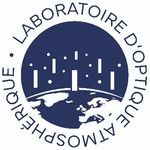AREA Project
AREA : Aerosol at the heaRt of the Earth Atmosphere system
The project Aerosol at the heaRt of the Earth Atmosphere system (AREA) aims to understand the role of aerosols in the Earth–Atmosphere system and to assess their impacts on climate change and air pollution.

AREA aims to strengthen the University of Lille’s unifying and leading role in atmospheric sciences in the Hauts-de-France region, building on the legacy of the “Chemical and Physical Properties of the Atmosphere” Laboratory of Excellence (Labex CaPPA).
In figures
in funding from the Initiative of Excellence each year
Project duration - renewable
Researchers & teacher-researchers
Technicians & engineers
PhD students and theses in progress
Scientific publications per year
The AREA strategy: understanding the project
A project that stands out
Ongoing research focuses on the physical and chemical characterization of aerosols throughout their atmospheric life cycle (emission, transport, deposition). AREA places particular emphasis on the variability of their optical and hygroscopic properties, as well as their interactions with clouds in the context of global climate change and ongoing economic and societal transitions.
The distinguishing feature of this project, which sets it apart at the national and European levels, is that it tackles the science of atmospheric aerosols by combining molecular modelling, laboratory and field studies from the most fundamental processes to local and global observations, and to modelling of the atmosphere.
![[Translate to English:] Image d'illustration AREA](/fileadmin/_processed_/3/e/csm_earth-7867992_960_720_ddfe414a41.jpg)
Explanation of the Diagram
Atmospheric aerosols are microscopic liquid or solid particles suspended in the air. These particles originate from both natural sources (volcanoes, oceans, deserts, biogenic emissions, biomass burning, etc.) and human activities (industry, traffic, heating, intensive livestock farming and agriculture, etc.).
They are released into the atmosphere alongside gaseous species such as ozone (O₃), sulfur dioxide (SO₂), and volatile organic compounds (VOCs). The AREA project studies the reactivity of aerosols with these gases, as well as their interactions with solar radiation and clouds.
![[Translate to English:] Schéma des interactions des aérosols atmosphériques](/fileadmin/_processed_/1/f/csm_schema_area_daa449923f.png)
![[Translate to English:] Pictogramme illustratif : planète Terre et atmosphère](/fileadmin/_processed_/4/7/csm_PictoULille_International_Blanc-175_e7bbced5b8.png)
Impact on climate
Atmospheric aerosols can influence the climate and its evolution: they can absorb or reflect solar radiation, or generate droplets that lead to cloud formation.
![[Translate to English:] Pictogramme illustratif : santé](/fileadmin/_processed_/3/f/csm_PictoULille_Sante___Blanc-256_82dd957f57.png)
Impact on air pollution and health
The finer these particles are, the more they penetrate the lungs and can cause bronchopulmonary disease. The finest particles (<100 nm) can penetrate the skin barrier. Some contain toxic chemical compounds.
AREA goals
Aerosol–radiation and aerosol–cloud interactions remain poorly quantified. They depend heavily on several properties, including particle size, chemical composition, and atmospheric residence time. Advancing our understanding of the role aerosols play in the Earth–Atmosphere system is therefore essential. This approach is part of a broader effort to improve predictions of atmospheric chemical composition at both local and global scales, and to assess the impacts on climate and air quality in a rapidly changing world.
Find out more about our research
- Physical and chemical characterization of aerosols properties
- Relations to their optical and hygroscopic properties
- Gas-particle interactions: aerosols formation and aging processes
- Trends and variability of aerosols and their precursors
- Aerosol–cloud–radiation interactions, monitoring of adjustments linked to climate change
- Chemistry–transport models, inverse modeling, source–receptor models
At a glance
Using state-of-the-art equipment and methodologies, the AREA project seeks to improve the measurement of complex interactions between aerosols and the environment across various spatial and temporal scales. The ultimate goal is to deepen our understanding of aerosol behavior in the atmosphere and enhance atmospheric and climate models.
Partners
Discover the structures and actors involved in the AREA project
The CDP AREA aims to foster collaborations with public and private partners, thus contributing to regional and national economic and social development. By attracting the best talent, including master's students, PhD students, postdoctoral researchers and senior scientists, it significantly strengthens innovative research and educational initiatives in the atmospheric sciences.



![[Translate to English:] Logotype du laboratoire PC2A](/fileadmin/_processed_/a/6/csm_26500_logo_PC2A_vectorise_7a46291f1d.png)
![[Translate to English:] Logotype du laboratoire LASIRE](/fileadmin/_processed_/c/4/csm_logo_LASIR_9fb6aca25e.png)
![[Translate to English:] Logotype du Laboratoire d'optique atmosphérique](/fileadmin/_processed_/7/8/csm_Labo_optique_7adb2927ba.jpg)
![[Translate to English:] Logotype de l'IMT Nord Europe](/fileadmin/_processed_/b/7/csm_Logo_IMT_Nord_Europe_b83f7a1c48.png)
![[Translate to English:] Logotype du laboratoire PhLAM](/fileadmin/_processed_/2/8/csm_phlam_4b91b5356a.png)

![[Translate to English:] Logotype du laboratoire lpca](/fileadmin/_processed_/6/0/csm_lpca_2eef32dc85.png)

![[Translate to English:] Logotype du CERLA](/fileadmin/_processed_/f/5/csm_cerla_2f886e7a40.jpg)
![[Translate to English:] Logotype de ACTRIS France](/fileadmin/_processed_/1/7/csm_actris_france_7e42db1587.jpg)
![[Translate to English:] Logotype de ACTRIS Europe](/fileadmin/_processed_/7/1/csm_Actris-logo-1-300x180_ba3c8a1eb9.png)
![[Translate to English:] DATA TERRA, partenaire du projet AREA](/fileadmin/_processed_/f/5/csm_DATATERRA-logo_e9a8815879.png)
![[Translate to English:] Partenaire [Translate to English:] Accès au site du partenaire : CNRS](/fileadmin/_processed_/0/5/csm_cnrs_56c3662e4f.png)
![[Translate to English:] Partenaire [Translate to English:] Accès au site du partenaire : INRAE](/fileadmin/user_upload/initiative-excellence/images/partenaires/inrae.svg)
![[Translate to English:] Partenaire [Translate to English:] Accés au site du partenaire : CHU](/fileadmin/_processed_/8/7/csm_Logo_CHU_de_Lille_089a7ac546.png)
![[Translate to English:] Partenaire [Translate to English:] Accès au site du partenaire : Centrale Lille](/fileadmin/_processed_/1/3/csm_centrale_lille_e36ec71030.png)